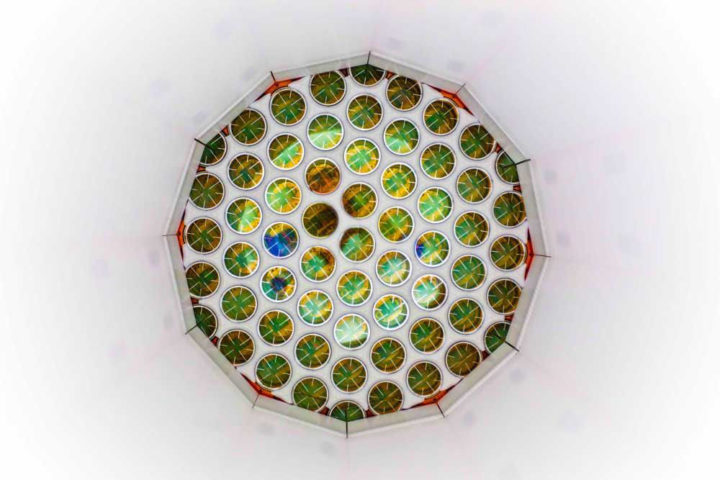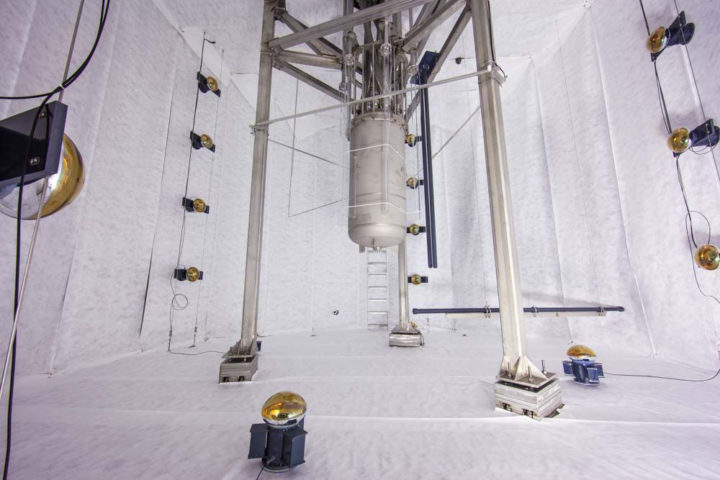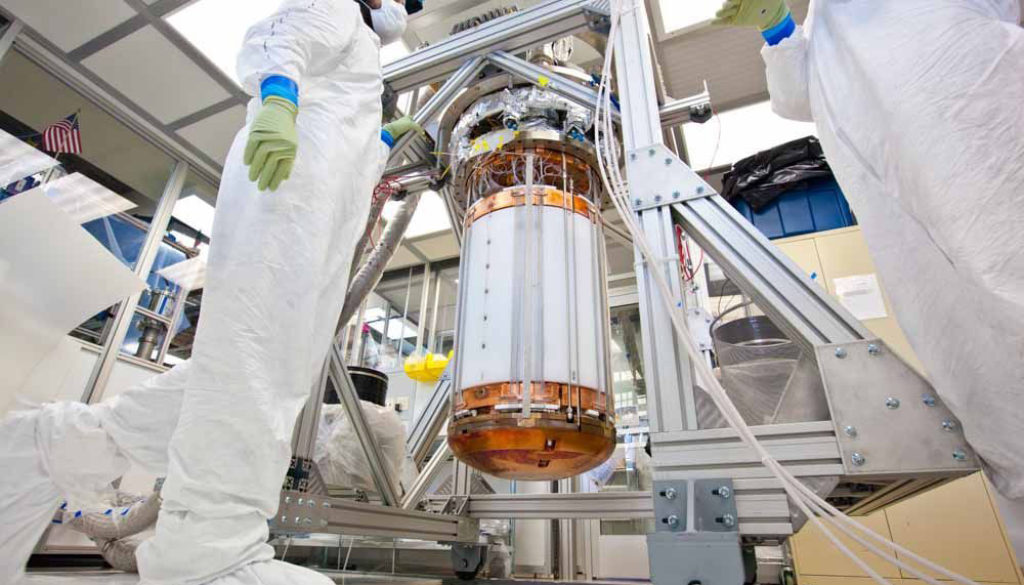THIS JUST IN: LUX, World’s Most Sensitive Dark Matter Detector, Reports First Results
A massive experiment quietly operating since spring roughly a mile underground in the Black Hills of South Dakota and involving liquid xenon, the world’s biggest detector and about a hundred international scientists — including Texas A&M University physicists — has proven itself the most sensitive dark matter detector in the world.
Among other distinguishing factors, the federally funded Large Underground Xenon (LUX) experiment features greatly enhanced sensitivity to low-mass WIMPs, or weakly interacting massive particles that are believed to be the leading theoretical candidates for dark matter, which accounts for nearly a quarter of the universe but so far has been observed only by its gravitational effects on galaxies and clusters of galaxies.


LUX scientists claim a sensitivity limit three times better than any previous dark matter experiment as well as a sensitivity more than 20 times better than previous experiments for low-mass WIMPs, whose possible detection has been suggested by other experiments. Three such candidate low-mass WIMP events recently reported in ultra-cold silicon detectors would have produced more than 1,600 events in LUX’s much larger detector, or one every 80 minutes during the experiment’s recent run. No such signals were seen.
Brown University physicist Rick Gaitskell and Yale University physicist Dan McKinsey, co-spokespersons for LUX, announced the collaboration’s first-run results at a seminar today (Wednesday, Oct. 30) at the Sanford Underground Research Facility (Sanford Lab) in Lead, S.D.
Texas A&M’s Robert C. Webb, professor of physics and Texas A&M spokesperson for LUX as well as a member of the George P. and Cynthia Woods Mitchell Institute for Fundamental Physics and Astronomy, will present a related talk at 11 a.m. Friday (Nov. 1) in Room M102 within the Mitchell Institute on the Texas A&M campus.
The LUX experiment, which officially began collecting data this spring, relies on purified liquid xenon — a third of a ton of it. Encased in a 6-foot-tall titanium tank immersed in a second tank of ultra-pure water and cooled to minus 150 degrees Fahrenheit, the xenon is intended to highlight any particles that may be present as they pass through state-of-the-art detector equipment assembled during the previous three years 4,850 feet below the Earth’s surface in the Sanford Laboratory, ensconced within the repurposed Homestake gold mine and shielded from gamma rays, neutrons, background radiation and other possible data-altering environmental factors.
Webb, holder of the Ed Rachal Chair in High-Energy Physics and a principal investigator for LUX along with the late Texas A&M physicist James White, acknowledges the result is highly preliminary, given that it comes a mere 80 days into a 365-day run for the current phase of the experiment, set to continue through the next two years. However, he says it tentatively confirms the collaboration’s expectations of seeing little activity or evidence of signals of dark matter collisions, based on the deep, undisturbed conditions of the experiment and high performance level of what the group views as the most sensitive detector available.
“Given the depth of the experiment, the size of the detector and the amount of running we plan to do, we expected either to get confirmation of previous results or to be setting new limits on the abundance of dark matter,” Webb said. “Our focus was to detect background levels and to calibrate the detector and overall parameters of the experiment. In this 80-day run, we’ve seen background levels that are lower than anyone has ever seen anywhere at any time. The result is the most sensitive one to date, but this is part of a much longer search, and our work is still very much in a state of flux.
“LUX is pushing the cross-section to its lowest levels. Of course, there are still lots of questions. Are we looking for dark matter in the right places? Are there different varieties that could hide in places that we don’t see? Only time will tell. But we’re in the cat bird’s seat to discover dark matter, if it’s there as we think it is and interacts with xenon as we think it does. This is a celebration of the long-term investment that’s maturing, and we’re hoping to cash in on it in the near future.”
The LUX scientific collaboration, which is supported by the National Science Foundation (NSF) and the U.S. Department of Energy (DOE), includes 17 research universities and national laboratories in the United States, the United Kingdom and Portugal.
The Sanford Underground Research Facility’s mission is to enable safe and compelling underground research and to foster transformational science education. For more information, please visit the Sanford Lab website at http://sanfordlab.org.
DOE’s Office of Science is the single largest supporter of basic research in the physical sciences in the United States, and is working to address some of the most pressing challenges of our time.
To read more about the LUX experiment, from current result and next steps to background and a complete list of collaborators, please see the official press release.
For more on Webb and his research, visit Dr. Robert Webb
# # # # # # # # # #
About Research at Texas A&M University: As one of the world’s leading research institutions, Texas A&M is in the vanguard in making significant contributions to the storehouse of knowledge, including that of science and technology. Research conducted at Texas A&M represents annual expenditures of more than $776 million. That research creates new knowledge that provides basic, fundamental and applied contributions resulting in many cases in economic benefits to the state, nation and world. To learn more, visit http://vpr.tamu.edu.
-aTm-
Contact: Shana K. Hutchins, (979) 862-1237 or shutchins@science.tamu.edu or Dr. Robert C. Webb, (979) 845-4012 or webb@physics.tamu.edu
The post THIS JUST IN: LUX, World’s Most Sensitive Dark Matter Detector, Reports First Results appeared first on Texas A&M College of Science.
